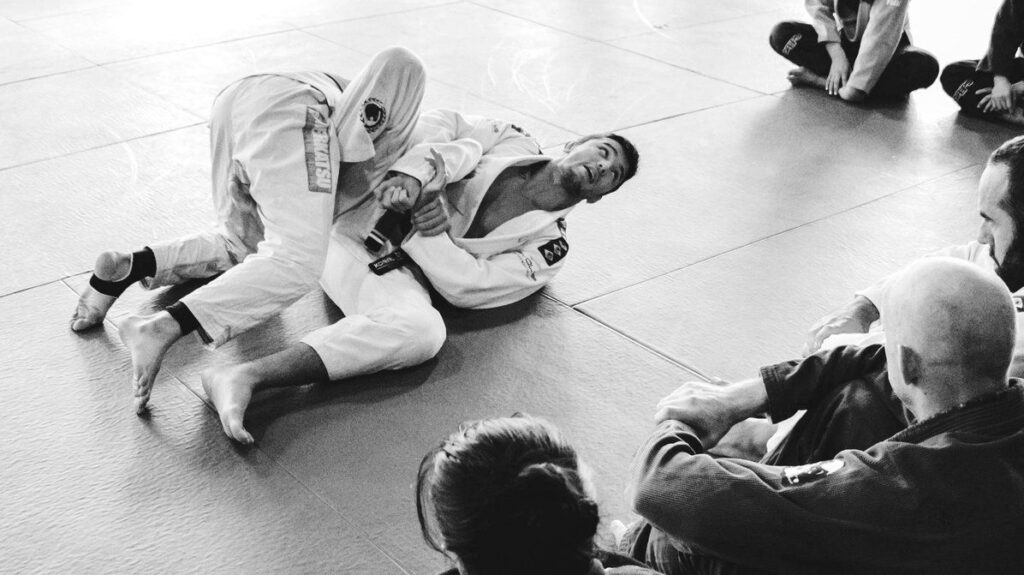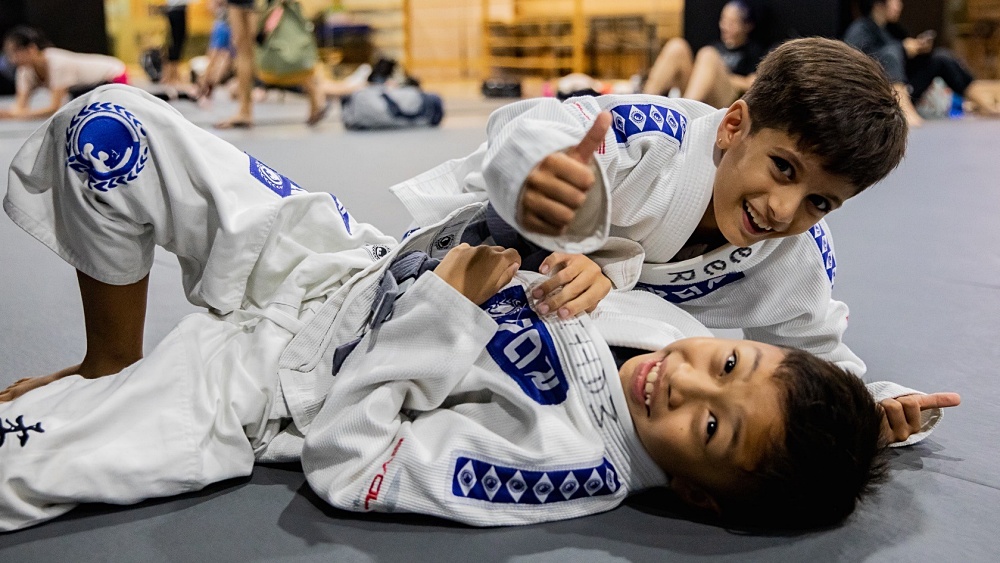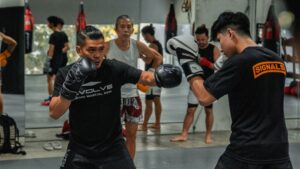The Kimura lock, which is also known as the double wristlock, chicken wing, and gyaku ude-garami, is a highly effective submission that has been successfully used in both BJJ and MMA competition. The Kimura works by isolating the elbow and shoulder joints through the use of a figure-four grip. One of the things that makes this submission so effective is its versatility. It can be applied from a number of different positions, including standing, mount, side control, closed guard, and open guard. In addition, the Kimura can be used as a method of sweeping and controlling one’s opponent. It is for these reasons that the Kimura should be incorporated into every BJJ student’s repertoire, as it is a highly versatile submission that can be applied in both competition and self-defense scenarios. Below is an overview of the history and application of this highly effective technique.
History Of The Kimura
Although variations of the Kimura have been used in judo, catch wrestling, and freestyle wrestling for years, the submission didn’t attain widespread popularity until judoka Masahiko Kimura successfully applied the technique in a match with Helio Gracie on October 23, 1951. Masahiko Kimura, widely considered the greatest judoka of his generation, arrived in Brazil in the early 1950s to perform in a series of professional wrestling matches. When the Gracie family learned that Kimura was in Brazil, they challenged the famous judoka to a grappling match, believing that their style of Gracie Jiu-Jitsu would emerge victorious. Kimura accepted the challenge, and he defeated Gracie using the gyaku ude-garami—the submission that the Gracie family would come to refer to as the Kimura lock.
How To Apply The Kimura
As noted above, the Kimura can be achieved from a variety of positions. For example, as demonstrated in the following clip, legendary MMA fighter Kazushi Sakuraba was a master of securing this submission from a standing position.
However, most beginners are initially taught this submission from the closed guard and mount positions. Below is an overview of how to execute the Kimura hold from both of these positions.
Kimura From Closed Guard
- From the closed guard, pull your legs towards you, forcing your opponent to place his or her hands on the mat.
- Once your opponent has placed his or her hands on the mat, grab the wrist of the arm you want to attack.
- Open your legs, hip escape, sit up, and reach over your opponent’s triceps using the hand that isn’t gripping the wrist.
- Place your hand over and around your opponent’s arm, and grab your own wrist.
- From this position, pull your opponent’s upper arm tight against your chest.
- With the arm now trapped, escape your hips towards the side of your opponent’s trapped arm.
- As you hip escape, scissor your opponent’s body with your legs, keeping your calf pressed down on his or her lower back to prevent an escape.
- Apply the lock by moving the opponent’s elbow towards the head while trying to bring his or her hand to the back of the head.
Kimura From Mount Following Counter
When a Kimura is attempted, but the opponent is able to successfully defend the submission, the following technique may be applied:
- Keeping the opponent’s arm trapped, apply a standard hip bump sweep in the direction of the trapped arm.
- From the mounted position, maintain the Kimura grip on your opponent’s arm.
- Using your opposite leg, step over your opponent’s head.
- Apply the lock by sitting back and pulling your opponent’s elbow towards his or her head.
Additional Tips
Below are some additional tips for finishing the Kimura lock.
- Keep the opponent’s posture broken – As mentioned above, one leg should be placed over your opponent’s back in order to keep his posture broken. Make sure to keep the leg towards the opponent’s upper back, because if it’s placed too low, he or she can posture up and relieve the pressure from the submission.
- Achieve angles – It’s important to achieve an angle on your opponent before attempting to complete the submission. In addition, the arm should be bent at approximately a 90-degree angle to finish the lock. Remember, angles are everything in BJJ.
- Keep one foot on the mat and your knees pinched – By keeping one leg on the opponent’s back and the other on the mat with your knees pinched, you can exert even more control of your opponent to ensure that he or she can’t escape. No matter what the technique is, you should always be looking for ways to exert additional control.
- Use an appropriate grip – One aspect of BJJ that is often overlooked is gripping. When applying the figure-four grip to your opponent’s arm, use a thumbless grip. Also known as a monkey grip, this gripping technique provides additional leverage to extend the trapped arm even further.
The Kimura lock is only one of many submissions you’ll learn in BJJ. Practiced by students all over the world, BJJ is widely recognized as the premier grappling art. Not only does BJJ teach students how to apply submission holds and chokes, but it also emphasizes takedowns, and real-world self-defense techniques. If you’d like to get in the best shape of your life while learning the timeless art of self-defense, then BJJ is for you! Come experience the many benefits of BJJ! Join us for a complimentary trial class!
Book your complimentary trial class with our World Champions below!
If you have any other questions regarding Evolve MMA and the programs we offer, you can get in touch with our membership executives at the following locations:
Evolve MMA (Far East Square)
26 China Street
Far East Square #01-01
Singapore 049568
Phone: (65) 6536 4525
Evolve MMA (Orchard Central)
181 Orchard Road
#06-01 Orchard Central
Singapore 238896
Phone: (65) 6536 4556
Evolve MMA (KINEX)
11 Tanjong Katong Road
#02-52 KINEX
Singapore 437157
Phone: (65) 6288 2293
Evolve MMA (Clarke Quay Central)
6 Eu Tong Sen Street
#04-18 Clarke Quay Central
Singapore 059817
Phone: (65) 6226 2150
















